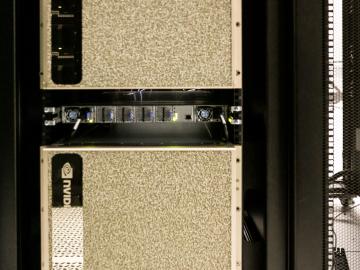Filter News
Area of Research
- (-) Building Technologies (1)
- (-) Supercomputing (31)
- (-) Transportation Systems (1)
- Advanced Manufacturing (6)
- Biological Systems (1)
- Biology and Environment (4)
- Clean Energy (60)
- Climate and Environmental Systems (2)
- Computational Engineering (1)
- Computer Science (8)
- Fusion Energy (6)
- Materials (55)
- National Security (5)
- Neutron Science (23)
- Nuclear Science and Technology (11)
- Quantum information Science (3)
News Topics
- 3-D Printing/Advanced Manufacturing (1)
- Advanced Reactors (1)
- Artificial Intelligence (6)
- Big Data (4)
- Bioenergy (2)
- Biomedical (2)
- Computer Science (23)
- Cybersecurity (2)
- Energy Storage (1)
- Environment (2)
- Exascale Computing (2)
- Frontier (2)
- Grid (1)
- Materials Science (2)
- Nanotechnology (1)
- Neutron Science (1)
- Nuclear Energy (2)
- Physics (1)
- Quantum Science (4)
- Security (1)
- Space Exploration (2)
- Summit (9)
- Sustainable Energy (2)
- Transportation (2)
Media Contacts

As home to three top-ranked supercomputers of the last decade, the US Department of Energy’s (DOE’s) Oak Ridge National Laboratory (ORNL) has become synonymous with scientific computing at the largest scales. Getting the most out of these science machines, however, requires a w...

Scientists at Oak Ridge National Laboratory and Hypres, a digital superconductor company, have tested a novel cryogenic, or low-temperature, memory cell circuit design that may boost memory storage while using less energy in future exascale and quantum computing applications.

By analyzing a pattern formed by the intersection of two beams of light, researchers can capture elusive details regarding the behavior of mysterious phenomena such as gravitational waves. Creating and precisely measuring these interference patterns would not be possible without instruments called interferometers.




